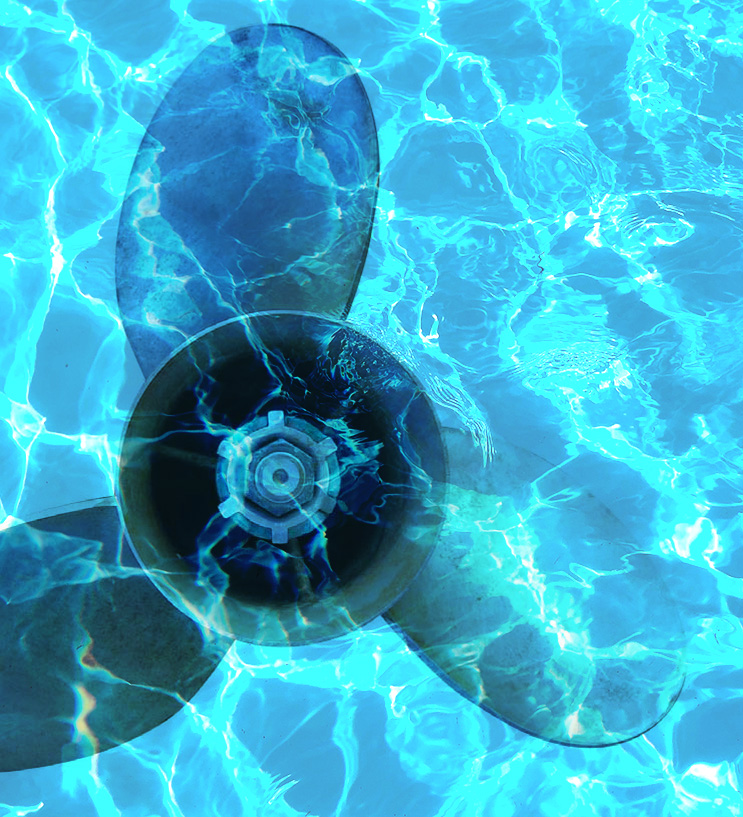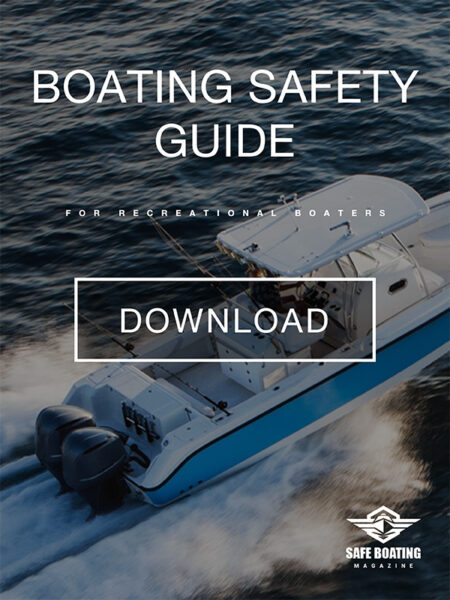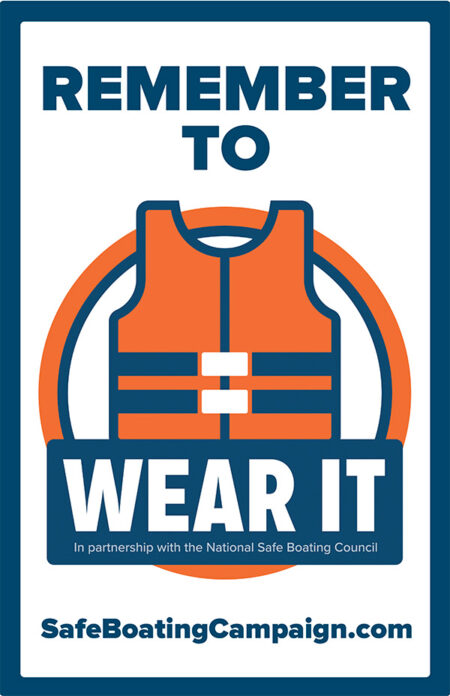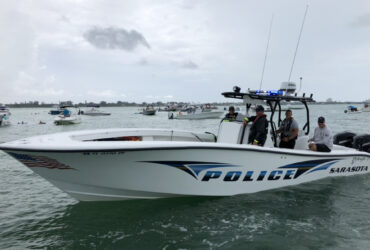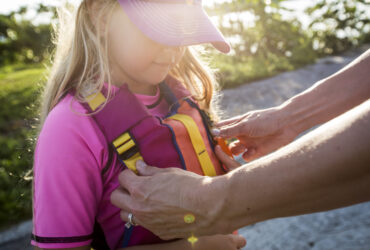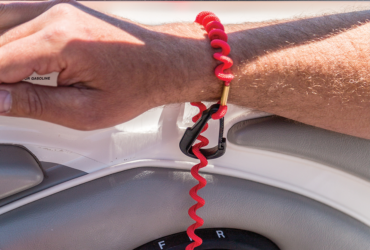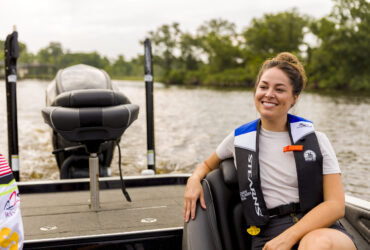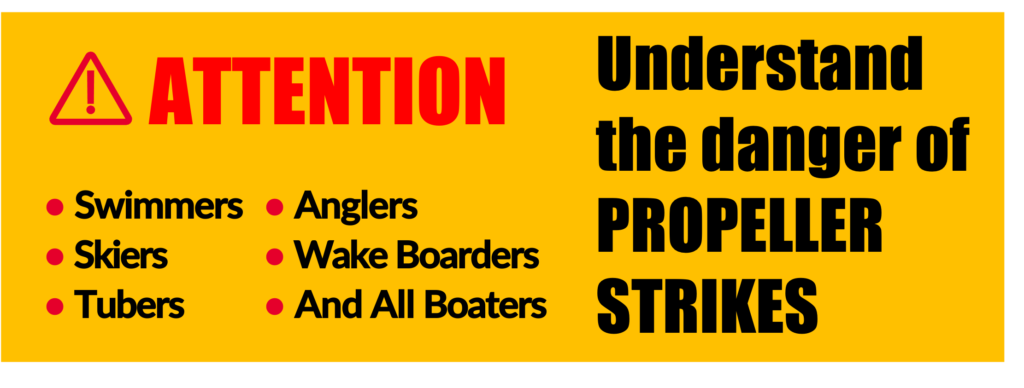
DID YOU KNOW?
A typical three-blade propeller running at 3,200 rpm can inflict 160 impacts in one second.
A typical recreational propeller can travel from head to toe on an average person in less than one tenth of a second.
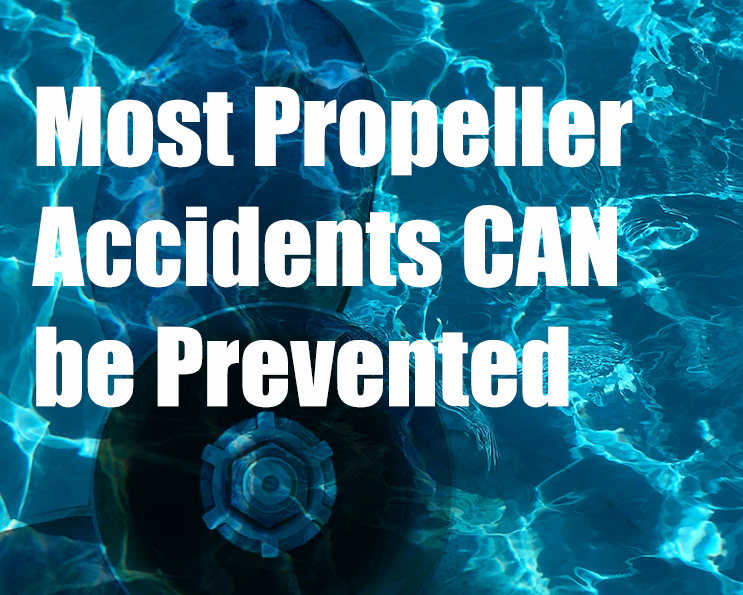
WHAT CAN YOU DO
- Be aware of what is going on around you! The captain of the boat is in command and must take responsibility for the safety of people in and around the boat.
- Wear your engine cut-off switch lanyard and your life jacket at ALL times. If the lanyard is removed from the switch, the engine will shut off.
- Assign a passenger to keep watch around the propeller area of your boat when people are In the water.
- Read and follow all the safety instructions in your boat and engine operator’s manuals.
- Consider installing propeller safety devices for your boat.
SAFETY DEVICES
A variety of safety devices are available to help prevent propeller strikes:
- Engine cut-off switches
- Propeller guards
- Ringed propellers Propulsion alternatives
- Interlocks
- Sensors
- Anti-feedback steering
BOAT PROPELLERS SAFETY TIPS
- People in the water may not be visible from helm. Before starting your engine, walk around the boat and look in the water to make certain that no one is in the water near the boat.
- Account for all your passengers prior to starting the engine.
- Never allow passengers to board or exit your boat from the water when engines are on – or idling (your propeller may continue to spin).
- Educate passengers about the location and danger of the propellers.
- Avoid call to attention to any propeller warning labels around on your boat.
- Be especially alert when operating in congested areas and never enter swimming zones.
- Take extra precautions near boats that are towing skiers or inflatables
- Never permit passengers to ride on the bow, gunwale, transom, seat backs, or other locations where they might fall overboard.
- Ensure each passenger is in a designed occupant position. Move passenger positions to suit water conditions. Insist all passengers use available handholds while the boat is underway.
- Children should be watched carefully while onboard.
- Establish clear rules for swim platform use, boarding ladders, and seating (if possible, passengers should remain seated at all times).
- If someone falls overboard, STOP! Then slowly turn the boat around, and keep the person in sight as you approach. Assign a passenger to continuously monitor the person in the water. Turn your engine off FIRST and then bring the person to safety.
- Never put your boat in reverse to pick someone up out of the water; circle around again.

